
How Architecture Review Works in Marin
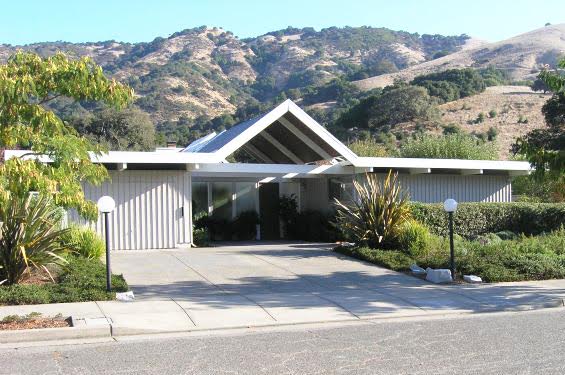 |
|
|
In many mid-century modern neighborhoods these days, people are looking into ways of preserving their architectural integrity. It’s far more than a question of architectural detailing, for most people. It’s about preserving the character of a neighborhood, even a way of life.
That’s why this is a good time to visit Upper Lucas Valley, one of Joe Eichler’s most delightful neighborhoods, nestled as it is into the hills of northern San Rafael.
In this 538-home neighborhood, rigorous architectural review, as authorized by the tract's CCRs (covenants, codes and restrictions), has done a marvelous job of keeping the neighborhood looking good.
"[Architectural] guidelines are included in the CCRs. The CCRs are like the constitution, the main laws that govern the community,” says Mark Neely, the chairman of the tract’s Architectural Review Committee.
Using CCRs and architectural review to preserve modern neighborhoods has come up recently as a possible strategy in several tracts, including the Mackay Homes tract of Fairmede in Santa Clara. That's why we are looking into their use in Upper Lucas Valley.
As Neely notes, neither CCRs nor architectural review guidelines will, on their own, accomplish anything. To enforce architectural rules, the enforcing body needs to be committed.
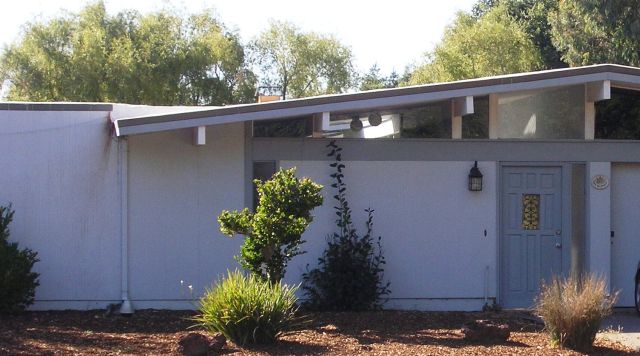 |
|
|
And, perhaps more importantly, people in the community have to be committed as well. They have to understand why the rules are important, despite the hassles they may entail.
Neely emphasizes that, while CCRs give the Lucas Valley Homeowners Association much power, their real value is as a spur to educate people about the value of their homes and the way in which their homes contribute to the overall community.
“In our case the CCRs are probably the most binding element, and they are one of the better tools to educate the homeowners on what they should be doing with their homes,” Neely says.
“CCRs are only as good as the governing body,” he says. “You have to be dedicated to stepping up and using them.”
He adds, “All these people are volunteers and live in the community with one another. No one wants to create strife.”
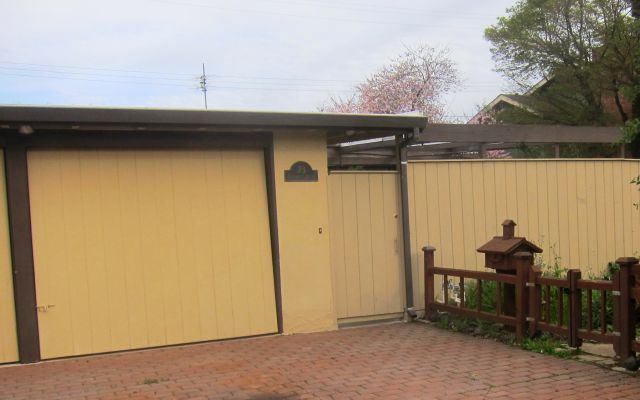 |
|
|
When a new homeowner arrives in Upper Lucas Valley, he or she receives a copy of the CCRs “with the closing documents,” Neely says.
“It’s a good first step in informing homeowners what details need to be preserved.”
“When it comes to planned communities, like the Eichlers tend to be, they are not individual homes,” he says. “They’re groups of homes. It’s like putting together a wedding party. You want to have a cohesive look.
“We are trying to preserve that flow between homes, is what the CCRs are trying to do. People have greater freedom for individual or unique refinements on the inside and in the back portions of the home, which aren't as visible from the street. But that doesn't mean you can't achieve variety between the homes, as long as the materials and how they are handled are consistent with the Design Guidelines.”
Over the years, says Neely, who has served on the architectural committee for about five years, three as its chairman, the committee has rarely needed to involve the power of the CCRs architectural guidelines. Most issues that come up “involve painting, roofs, and maybe driveways,” and are dealt with easily.
“Painting is firmly established,” he says. “We have a paint palette people need to adhere to.”
Guidelines are called into play when projects are of larger scope. Recent issues have involved people installing white roofs. “People who do very white roofs, in a community like ours with terracing, the white roofs can be blinding,” Neely says.”We are trying to keep roofs blending in more.”
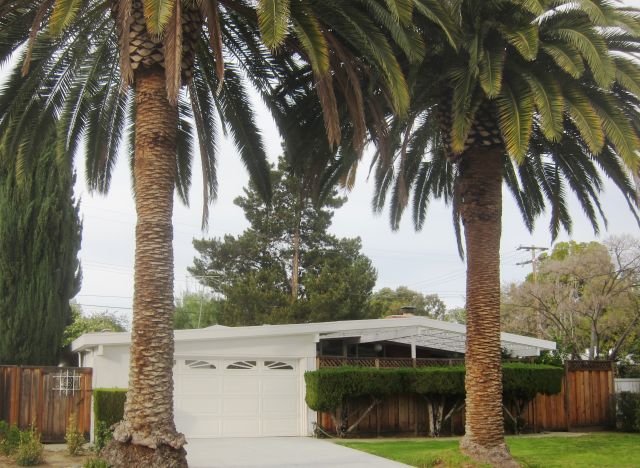 |
|
|
“There are gray areas where the guidelines don’t say, ‘don’t do it.’ We use them as a teaching tool.
Garage doors can be issues too. Some people these days replace original Eichler doors with doors that are even more 'modern' – but whose clashing materials detract from the unified streetscape, Neely says.
“A garage door with opaque glass may look nice and is modern. But it breaks apart the flow,” he says. “Unified materials create a harmony that is so nice.”
“What makes community flow is the continuity between homes in terms of materials. In communities without CCRs, you see a big difference.”
Also at issue with garage doors is color. Rules say it should match the color of the house. But some people paint the garage the color of the trim, or some other color, which makes it stand out too much.
In general, people follow decisions of the architectural committee. But not always. “There are about 10 homeowners out of 538 who have defied the garage door rule [about color],” Neely says.
"A mechanism in the CCRs provides for fines in such cases. The association doesn’t currently have a fine schedule in place. However, other penalties, such as limiting access to the community center and pool are possible as well.
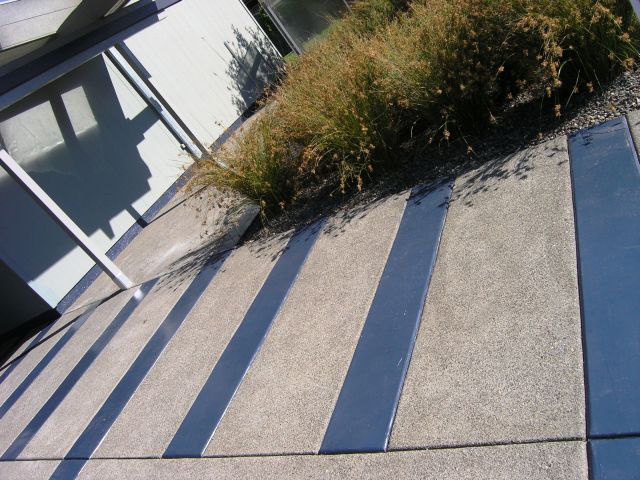 |
|
|
“Fines are something that may happen in the future, Neely says, "though some board members are reluctant. "
In any case, before imposing fines, offenders would be notified, given time to fix the problem, and be allowed to appeal.
Once, a decade or more ago, Neely says, the association had to go to court about a homeowner who had exceeded setbacks during a remodel.
The neighborhood has another layer of protection as well – an overlay zoning imposed more than a decade ago by the county of Marin to prevent, among other things, second-story additions.
The overlay “gives us a little more heft in stopping second stories,” Neely says. It means the county won’t issue a permit for a second-story addition. “That gives us more protection than what our board can do, an extra level of protection.”
If you’re considering re-invoking your neighborhood’s CCRs and architectural review, Neely offers advice.
“First and foremost, education and awareness,” he says. “Having people understand why these things are important is key.”
"It’s a challenge when homeowners see regulatory things coming down the pipeline," Neely adds. "There can be a fear that their home will become less valuable, or that [rules] will tie their hands.
“But CCRs are very beneficial toward preserving the community. It has increased values by six figures versus a community next to ours. It has been a definite benefit in preserving harmony and continuity.”
Simply having CCRs in force can increase home values, Neely says. It lets people, including would-be home buyers, realize that “There is someone looking out for the community overall. People get the idea that nobody will be doing something crazy.”
- ‹ previous
- 319 of 677
- next ›



